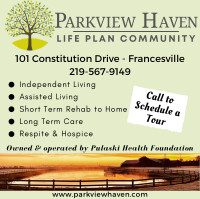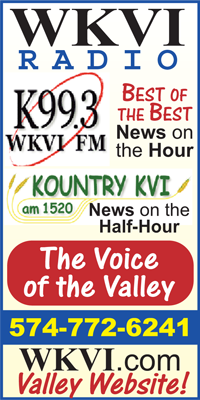The Winamac Safe Routes to School (SRTS) Task Force is in the process of developing a Comprehensive SRTS Plan, which will identify needed improvements such as sidewalks, crosswalks and bike lanes and develop walking and bicycling education programs, plus public outreach, traffic enforcement and other activities.
The goal of the Winamac SRTS Task Force is to encourage and enable WInamac's and surrounding communities' children to walk and bike to school, and to emphasize the importance of issues such as increasing physical activity among children, pedestrian safety, traffic flow, concern for the environment and building connections between families, schools and the broader community.
Safe Routes To School is a national program funded through the Federal Highway Administration.
 The local project was recently awarded a $75,000 grant, essentially a "planning" grant to get the project rolling. The Town of Winamac and Eastern Pulaski Community Schools were the joint grant applicants. The grant administrator and project coordinator will be Green 3 of Indianapolis.
The local project was recently awarded a $75,000 grant, essentially a "planning" grant to get the project rolling. The Town of Winamac and Eastern Pulaski Community Schools were the joint grant applicants. The grant administrator and project coordinator will be Green 3 of Indianapolis.
The Panhandle Pathway will also play a key role in Winamac's SRTS project.
The SRTS program strives to make walking and biking to school safe and more appealing. SRTS programs are 100 percent federally funded, which means no local funds are required.
At present, EPCS offficials estimate that less than a dozen of its 1,400 students walk or bike to school. In Indiana, successful walk-to-school programs or events have been set up in Liberty, Tell City and West Lafayette.
An extensive SRTS program has also been established in Chicago.
The Winamac SRTS task force is chaired by Dave Bennett. Also serving on the committee are Winamac town manager Jim Conner, EPCS superintendent Dr. Robert Klitzman, Friends of the Panhandle Pathway president John Bawcum, Pulaski County Economic Development Commission executive director Nathan Origer, Barb Schultz, Adam Bennett and Brad Conn. For more information on the program, contact Bennett at 574-94693343.
The SRTS program "comes down to expectations," says chairman Bennett, explaining that if people "expect" infrastructure to better facilitate an activity, efforts will often eventually be made to provide the facilities.
Bawcum points out that walking and biking to school is not just for kids, but also for teachers, staff and parents.
"We are always asking ourselves, how can I combine activity into my lifestyle? I don't have time," he says. "Parents can walk with their kids to school and combine physical activity into a normal routine."
Both Bennett and Bawcum noted how people today think nothing of driving a distance of three blocks, something that would make past generations aghast. They realize some will raise eyebrows about the project, but they note the same was true with the development of the walking trail in the town park which has since become a well-used feature.
But both are also excited that the SRTS program will provide another amenity, increasing the attractiveness of residing in Winamac, along with the river, the town park, and the Panhandle Pathway trail.
Breakdown of Grant Projects
The Safe Routes to School program was first proposed to Winamac town and school officials about two years ago, and was received favorably.
The purpose of the proposed SRTS activities is to increase walking and bicycling to four specific schools in the town of Winamac. By making that travel safe, convenient and attractive, the town intends to establish a viable alternative for elementary and middle school students, particularly those living within two miles, to travel to and from school.
A general description of the non-infrastructure activities and purchases, and estimated costs from the 2010 Town of Winamac SRTS application follows. Some activities may be performed under contract with the Town of Winamac.
| TASK/ACTIVITY | EST. COSTS |
| Comprehensive SRTS Plan Development | $30,000 |
| Encouragement Activities to increase walking and bicycling to school and/or Encouragement Purchases | 6,500 |
| Outreach and Promotion Activities directed to parents and/or students | 7,500 |
| Education materials for students | 4,000 |
| Student training in safe walking skills or bicycling skills | 7,300 |
| Traffic enforcement activities | 9,000 |
| Equipment purchases (e.g. crossing guard equipment, portable in-road signs) | 6,000 |
| TOTAL | $75,000 |
The SRTS Task Force expects to have these grant activities set in motion by spring 2012. They will form the basis for deciding what will be needed from a second "construction" grant to complete the project.
Bennett emphasized the the task force is "open for suggestions" from the public. For instance, a major challenge will be designing easy access along SR 14E from the hospital and doctors' offices into town.
"We want the public to feel they have ownership in the SRTS project," Bennett says. Those interested in the project are encouraged to contact Bennett.
Indiana Safe Routes to School Program
The Indiana Safe Routes to School (SRTS) Program is based on the federal program designed to make walking and bicycling to school safe and routine. Walking and bicycling are viable transportation alternatives for travel to and from school with significant potential benefits, among them reductions in motor vehicle traffic, associated fuel consumption for school trips and improved air quality.
In July 2005, Congress passed federal legislation that established a National Safe Routes to School program. The program, which was signed into law in August 2005, dedicated a total of $612 million towards SRTS from 2005 to 2009. The Federal Highway Administration administers the Safe Routes to School program funds and provides guidance and regulations about SRTS programs. Federal SRTS funds are distributed to states based on student enrollment, with no state receiving less than $1 million per year. SRTS funds can be used for both infrastructure projects and non-infrastructure activities. The legislation also requires each state to have a Safe Routes to School Coordinator to serve as a central point of contact for the state.
When SAFETE-LU was signed into law in 2005, the evidence was clear that disturbing weight gains among American children and a growing nationwide obesity epidemic threatened our health, the Indiana Department of Transportation reports. Bicycling and walking to school helps establish a healthy, active lifestyle from an early age. Generally, increased physical activity among school-aged children contributes to their improved personal health. However, towns with established SRTS programs also report a stronger sense of community identity and increased social skills among school-aged children.
INDOT is responsible for administering the Indiana SRTS Program that makes federal funding available for eligible activities and improvements. INDOT uses an application process to evaluate candidate projects. An SRTS Advisory Committee reviews applications and makes recommendations to fund infrastructure and non-infrastructure projects.







